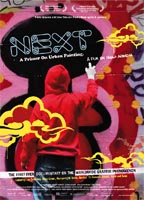Beyond the Street: The 100 Leading Figures in Urban Art
An interview with Steve Powers from the new encyclopedic book redefining street art
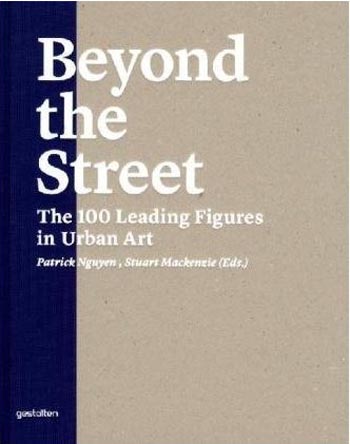
“Beyond the Street: The 100 Leading Figures in Urban Art” is a behemoth of a book loaded with a who’s-who of the contemporary urban art scene edited by Patrick Nguyen and Stuart. Surveying the work from figureheads such as Aaron Rose, Wooster Collective, Deitch Projects, Stephan Doitschinoff, Faile, Brad Downey and Swoon, in-depth interviews supplement loads of color images and artist biographies to create a 400-page tome of information.
Below, Cool Hunting gets an exclusive preview of the book (it comes out in the U.S. on 20 May 2010) with this interview excerpt conducted by Nguyen with New York-based artist Steve Powers, a.k.a. ESPO.
Londoners can catch the U.K. book launch party the Friday, 7 May 2010, from 6-9 pm at Phillips de Pury & Company on Howick Place. For those in New York, the event takes place Thursday, 27 May 2010, from 6-9 pm at Deitch Projects.
Pick up the book from Gestalten or pre-order from Amazon.
What led you to become an artist in the first place?
It was just raw, desperate hunger for attention. Because I grew up in a household with a lot of other children, drawing was a way to separate myself from the pack. So I got into it as a three-year-old and have been a compulsive drawer ever since.
Is it true that you were an art school dropout? If so, why did you quit?
Yeah, I dropped out of two different art schools. I just had a sneaking suspicion as I was handing over my tuition that you probably didn’t need anything they were teaching at art school to be an artist. Like being a musician, either you have it or you don’t. If you have the talent and you put in the hours and you get lucky, art school’s not going to help you anyway.
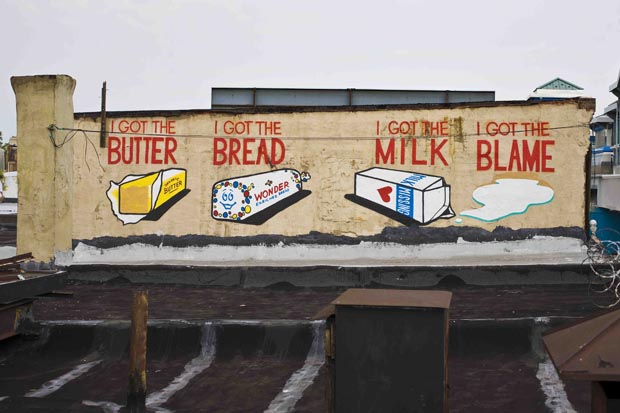
When did you start doing graffiti?
I was doing graffiti as a teenager, basically as a sophomore in high school in the suburbs of Philadelphia. It was something new to me. It was just brutally breaking out of the neighborhoods of New York and Philadelphia and starting to go national with “Style Wars” and “Subway Art.” And it had everything I wanted in art: color, design, line, it was illegal, but not that illegal—all the things that captivate teenagers. Typically in those days, in the mid-eighties in Philadelphia and New York, it was really a young person’s game. They’d start at 12 and were done at 18. I started a little late at 16, and I didn’t really finish until I was 30.
Continue reading and see more images after the jump.
Could you describe some of the background to the ESPO tags you used to do on storefront grates in New York?
At a New Year’s party in 1997, I got in an argument with a graffiti video director/producer. I basically laid out the theory that I could paint anywhere in New York any time I wanted, and get over without getting arrested for it. He said, “Absolutely not. It can’t be done.” It was something I’d been thinking about for a while. At the time, Mayor Giuliani wanted people to be responsible for the graffiti on their own properties and for owners to be fined if they didn’t remove it. Well, the property owners in New York are an extremely powerful group of people, so that never really came to pass. But I liked the idea of doing something so fundamentally benign like painting over graffiti and then turning it into graffiti at the last minute. I didn’t anticipate the reaction it would get, but once I’d done it a couple of times, I decided to keep going and ended up doing around 75 grates. The rule of thumb in New York is that if you’re doing something new, you can’t just do it once or twice; otherwise, the next person’s going to pick it up and take all the credit for it. So in doing it as many times as I could, I really held on to the idea for myself.
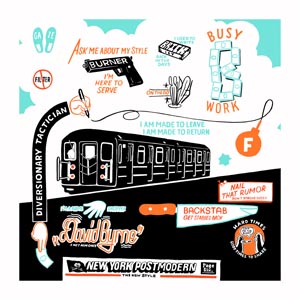
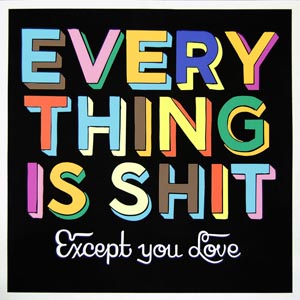
When did you stop painting illegally and become a “respectable member of society?”
I stopped doing graffiti in ’99. I’d been painting for 15 years by that point and had done everything two or three times over. I really just wanted to focus on making art. To me, the term graffiti art is an oxymoron. Graffiti does its own thing; it doesn’t need to aspire to anything more than graffiti. It’s cool if it does, but I think calling yourself a graffiti artist places an unnecessary burden on you. You’re probably not going to make that good graffiti, and you’re probably not going to make that good art if you’re trying to do both at the same time.




